Nerve Pain Map: Understanding Nerve Injuries Across the Body
What are the common causes of nerve injuries? How can they be treated? Explore the details of different nerve conditions and their management.
Nerve Injuries in the Head and Neck
Nerve injuries can occur in the head and neck region, affecting various nerves such as the greater auricular nerve, inferior alveolar nerve, lingual nerve, and spinal accessory nerve. These injuries can be caused by surgical procedures, trauma, or other factors.
Greater Auricular Nerve
The greater auricular nerve provides sensation to the lower side of the face and ear. Common causes of injury include facelift procedures, parotid gland removal, and trauma to the side of the head. Symptoms may include tingling, pain, and loss of feeling in the affected area. Treatment options may involve direct nerve repair, nerve grafting, or other surgical methods.
Inferior Alveolar Nerve
The inferior alveolar nerve provides sensation to the lower jaw, lip, and teeth. Injuries can occur during tooth extraction, jaw surgery, or dental implant procedures. Symptoms may include tingling, pain, or loss of sensation in the lip and chin, potentially leading to bite wounds or burn injuries. Treatment may involve nerve repair or grafting techniques.

Lingual Nerve
The lingual nerve provides sensation to the tongue and inside of the cheek. Injuries can happen during tooth extraction, dental implant procedures, or the removal of cysts or tumors. Symptoms include tingling, pain, and loss of sensation in the inner mouth. Surgical methods, such as direct repair or nerve grafting, may be used to address these injuries.
Spinal Accessory Nerve
The spinal accessory nerve stabilizes and shrugs the shoulder. Injuries can occur during surgical procedures, lymph node removal, or traumatic events. Symptoms include a slumping shoulder and upper back pain. Treatment may involve decompression surgery, pain/anti-inflammatory medications, or the use of specialized soft tissue implants to protect the nerve.
Nerve Injuries in the Upper Arm
The upper arm region can be affected by nerve injuries, particularly the axillary nerve and the brachial plexus nerves.
Axillary Nerve
The axillary nerve provides movement and sensation to the shoulder. Injuries can result from improper use of crutches, tight casts, or traumatic events like car accidents or upper arm fractures. Symptoms include numbness, weakness, and inability to raise the shoulder or lift objects. Decompression surgery or nerve repair techniques may be used to address these injuries.

Brachial Plexus Nerves
The brachial plexus nerves are responsible for motor and sensory control of the hand, wrist, elbow, and shoulder. Injuries can occur due to traumatic events, such as car accidents, or during childbirth (Erb’s palsy). Symptoms may include a limp arm, loss of sensation, weakness, pain, or even complete arm paralysis. Surgical repair methods, including nerve grafting, can be employed to address brachial plexus nerve injuries.
Nerve Injuries in the Pelvis
The pelvic region can also be affected by nerve injuries, particularly the cavernous nerve.
Cavernous Nerve
The cavernous nerve facilitates penile erection and urinary continence. Injuries can occur during prostatectomy or colorectal surgery. Symptoms include erectile dysfunction and urinary incontinence. Surgical repair methods, often performed robotically, can be used to address cavernous nerve injuries.
Nerve Injuries in the Lower Arm and Hand
The lower arm and hand are susceptible to nerve injuries, such as those affecting the ulnar nerve and median nerve.

Ulnar Nerve
The ulnar nerve allows movement and sensation in the wrist and hand. Injuries can result from nerve entrapment, trauma, or neuroma formation. Symptoms include numbness, pain, weakness, and loss of coordination in the hand and fingers. Treatment may involve surgery to free the nerve and provide protective wrapping.
Median Nerve
The median nerve controls movement and sensations in the hand. Injuries can occur due to conditions like carpal tunnel syndrome, lacerations, or traumatic events. Symptoms may include numbness, pain, and weakness in the hand. Surgical treatment to address the compressive or injurious factors may be necessary.
Comprehensive Nerve Injury Management
Nerve injuries can occur in various regions of the body and can significantly impact function and quality of life. Understanding the common causes, symptoms, and treatment options for different nerve conditions is crucial for effective management. If you suspect a nerve injury, it is important to seek prompt medical attention from a qualified healthcare professional.
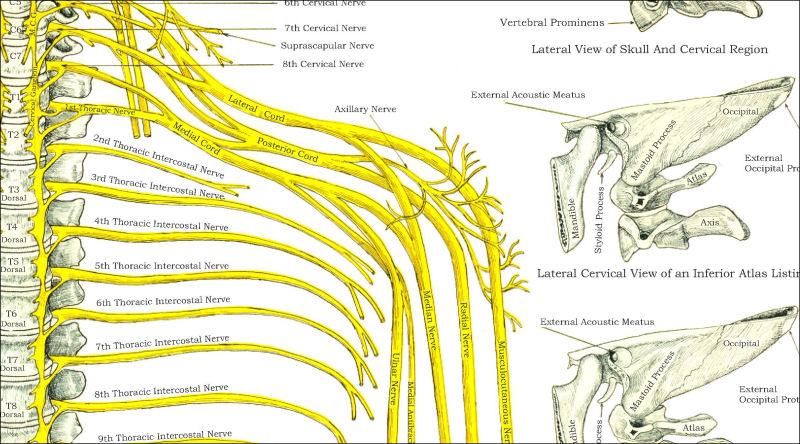
Peripheral nerve injury map | Axogen
know your nerves
A peripheral nerve injury can occur anywhere in the body. Select an area of the body where you suspect nerve damage, and learn about those nerves, their functions, causes of injury, symptoms and treatments.
Head and neck
Greater auricular nerve
Provides sensations to the lower side of the face and ear
Common causes of injury:
- Unexpected injury during facelift procedures
- Surgical procedures such as removal of the parotid gland
- Use as a donor nerve for auto graft procedures
- Trauma such as a blow to the side of the head
Symptoms: Tingling, pain, and/or loss of feeling in the side of the face and ear.
Treatment: In the case of a nerve transection or neuroma, direct repair, auto graft, allograft or other surgical repair method can be used.
Inferior alveolar nerve
Provides sensation to the lower jaw, lip and teeth
Common causes of injury:
- Tooth extraction
- Jaw osteotomy, surgical realignment of the jaw
- Dental implant procedures
Symptoms: Tingling, pain, or loss of sensation in the lip and chin; may result in bite wounds or burn injuries of the lower lip.
Treatment: In the case of a nerve transection or neuroma, direct repair, auto graft, allograft or other surgical repair methods can be used.
Lingual nerve
Provides sensation to the tongue and the inside of the cheek
Common causes of injury:
- Tooth extraction
- Dental implant
- Anaesthetic injection
- Surgical procedures such as removal of a cyst or tumour
- Neuroma
Symptoms: Tingling, pain and/or loss of sensation in the inner mouth.
Treatment: In the case of a nerve transection or neuroma, direct repair, auto graft, allograft or other surgical methods can be used.
Spinal accessory nerve
Stabilises and shrugs the shoulder
Common causes of injury:
- Unexpected damage during surgical procedures
- Lymph node removal in the neck
- Radical neck dissection due to cancer
- Traumatic event such as a car accident
Symptoms: Slumping shoulder and pain in the upper back.
Treatment: In the case of a nerve transection or neuroma, direct repair, auto graft, allograft or other surgical methods can be used. For entrapment syndromes, doctors may prescribe pain and anti-inflammatory medications to reduce the pain as sometimes recovery happens on its own. In more serious cases, treatment requires decompression of the nerve. This procedure may require surgery to open the affected area and remove the compressing force on the nerve. In addition, specialised soft tissue implants may be used to wrap and protect the nerve from soft tissue attachments or to reduce inflammation.
Upper arm
Axillary nerve
Provides movement and sensation to the shoulder
Common causes of injury:
- Improper use of crutches
- Improper placement and tightness of a cast
- Traumatic event such as a car accident
- Fracture of the upper arm bone
Symptoms: Numbness or weakness in outer shoulder; inability to raise shoulder or lift objects.
Treatment: For a compression injury, a decompression surgery can be performed, which removes the pressure on the nerve. In the case of a nerve transection or neuroma, direct repair, auto graft, allograft or other surgical repair method can be used.
Brachial plexus nerves
Responsible for motor and sensory control of the hand, wrist, elbow and shoulder
Common causes of injury:
- Traumatic event such as a car accident
- Erb’s palsy (damage during childbirth)
Symptoms: Limp arm and loss of sensation in the shoulder, arm and hand; may be unable to lift arm or flex at the elbow; weakness, pain or numbness may also occur; severe cases may cause complete arm paralysis.
Treatment: In the case of a nerve transection, direct repair, auto graft, allograft or other surgical repair method can be used.
Pelvis
Cavernous nerve
Facilitates penile erection and urinary continence
Common causes of injury:
- Prostatectomy, removal of the prostate
- Colorectal surgery
Symptoms: Erectile dysfunction or urinary incontinence.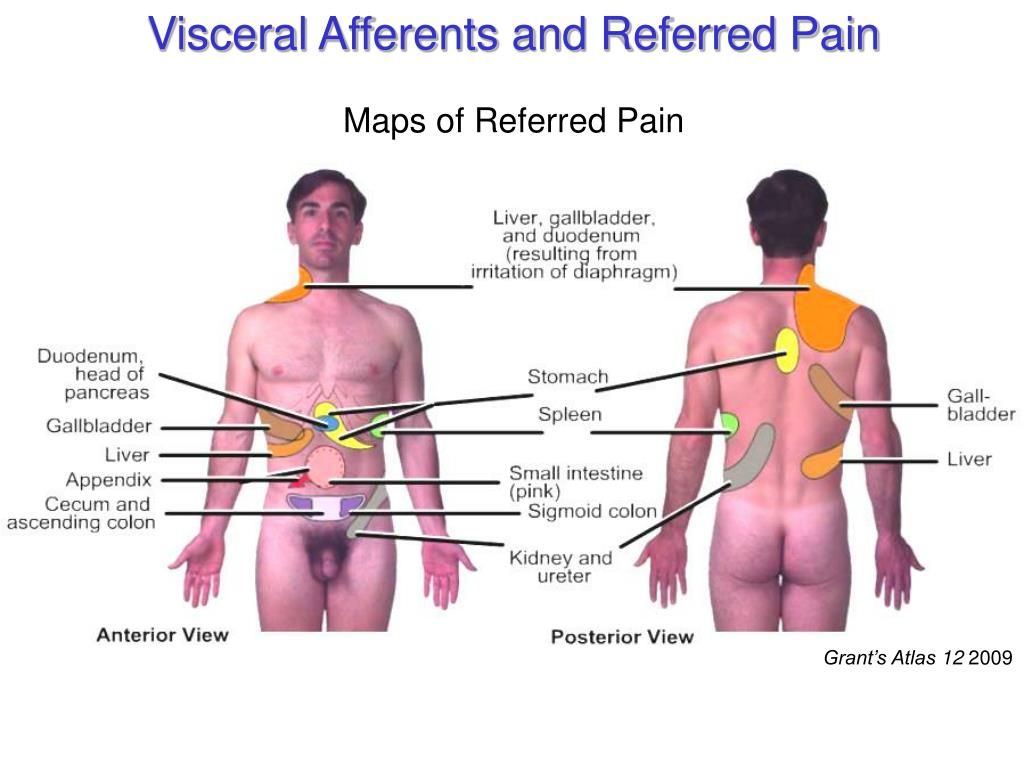
Treatment: In the case of a nerve transection, direct repair, auto graft, allograft or other surgical repair methods can be used. Grafting procedures of the cavernous nerve are typically done robotically.
Lower arm and hand
Ulnar nerve
Allows movement and sensation in the wrist and hand
Common causes of injury:
- Entrapment of the nerve
- Traumatic event such as a car accident
- Neuroma
Symptoms: Numbness, pain or weakness in the hand; loss of coordination of the fingers and weakness of hand flexing.
Treatment: The treatment for entrapment syndromes consists of removing the compressive pressure on the nerve. Surgery is often needed to free the nerve, and a protective wrap can be placed around the nerve to help minimise the compressive pressure. In the case of a nerve transection or neuroma, direct repair, auto graft, allograft or other surgical repair methods can be used.
Median nerve
Controls movement and sensations in the hand
Common causes of injury:
- Carpal tunnel syndrome
- Laceration
- Traumatic event such as a car accident
- Neuroma
Symptoms: Loss of sensation, pain, and/or inability to move the forearm, wrist, or hand; inability to hold objects with the hand.
Treatment: Treatment is specialised to correct the underlying cause. For entrapment syndromes, a splint may be worn at night to allow inflammation to decrease, and sometimes recovery happens on its own. In more serious cases, treatment requires decompression of the nerve. This procedure may require surgery to open the affected area and remove the compressing force on the nerve. In addition, specialised soft tissue implants may be used to wrap and protect the nerve from soft tissue attachments or to reduce inflammation. In the case of a nerve transection or neuroma, direct repair, auto graft, allograft or other surgical repair methods can be used.
Radial nerve
Controls sensations of the back of the hand and wrist, and controls the finger-thumb pinch motion
Common causes of injury:
- Entrapment of the nerve
- Traumatic event such as a car accident
- Result from humeral breaks or fractures
- Neuroma
Symptoms: Numbness/tingling or weakness in the wrist, fingers and thumb; may cause wrist drop.
Treatment: The treatment for entrapment consists of removing the compressive pressure on the nerve. Surgery is often needed to properly free the nerve, and a protective wrap can be placed around the nerve to help minimise the compressive pressure or reduce inflammation. In the case of a nerve transection or neuroma, direct repair, auto graft, allograft or other surgical repair methods can be used.
Digital nerve
Provides sensation to the fingers
Common causes of injury:
- Laceration
- Traumatic event such as a power tool accident
Symptoms: Tingling, pain and/or numbness.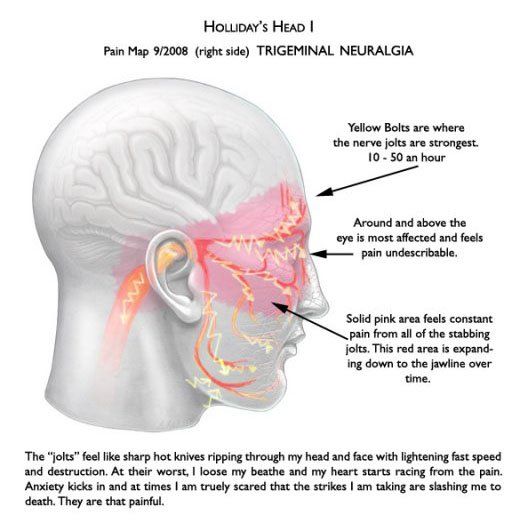
Treatment: In the case of a nerve transection, direct repair, auto graft, allograft, hollow tube conduit or other surgical repair methods can be used.
Upper leg
Obturator nerve
Provides motor and sensory function to the thigh
Common causes of injury:
- Pelvic or abdominal surgery
- Entrapment of nerve
Symptoms: Loss of sensation in thigh; inability to pull leg into the body.
Treatment: In the case of a nerve transection, direct repair, auto graft, allograft or other surgical repair methods can be used. Treatment for compression injuries can include pain medications and physical therapy. If problems persist, surgery might be necessary to remove the compressive pressure on the nerve.
Sacral nerve
Innervates buttocks and thigh and helps control urinary and faecal excretion
Common causes of injury:
- Traumatic events such as serious falls
- Vaginal childbirth
- Hysterectomy
- Surgical removal of tumours
Symptoms: Muscle weakness and/or shooting, burning, or stabbing pain running from buttocks to thigh; potential problems with urination and/or defecation.
Treatment: Depending on the injury type, the patient may be treated using physical therapy, steroids and pain medication. If these do not work, surgery may be an option.
Sciatic nerve
Provides sensation and movement to the back of thigh, leg and foot
Common causes of injury:
- Traumatic event such as an ATV accident
- Hip implant surgeries
Symptoms: Pain, weakness and/or numbness down the back of the leg to the knee; loss of sensation below the knee.
Treatment: For traumatic injuries and injuries caused by hip implant surgeries that lead to a transection of the nerve, surgical methods are needed for proper nerve repair. These methods could consist of a direct repair, an auto graft or an allograft, among other choices. Compression of the nerve either by traumatic event or the placement of a hip implant can be treated by removing the compressive pressure on the nerve. To aid in the repair of the nerve, a protective wrap can be placed around the nerve to help minimise the compressive pressure or reduce inflammation.
To aid in the repair of the nerve, a protective wrap can be placed around the nerve to help minimise the compressive pressure or reduce inflammation.
Lower leg
Peroneal nerve
Controls movement and sensation to the lower leg, foot and toes
Common causes of injury:
- Traumatic event such as a car accident
- Compression of nerve in fibular tunnel
- Knee injuries
Symptoms: Inability to hold foot horizontal (foot drop), weakness and/or loss of sensation in ankle and foot, or walking abnormalities.
Treatment: Therapy, steroids and time might be enough to allow function to return. In the case of a nerve transection or neuroma, direct repair, auto graft, allograft or other surgical repair methods can be used. For entrapment syndromes, doctors may prescribe pain and anti-inflammatory medications to reduce the pain caused as sometimes recovery happens on its own. In more serious cases, treatment requires decompression of the nerve. This procedure may require surgery to open the affected area and remove the compressing force on the nerve. In addition, specialised soft tissue implants may be used to wrap and protect the nerve from soft tissue attachments or to reduce inflammation.
This procedure may require surgery to open the affected area and remove the compressing force on the nerve. In addition, specialised soft tissue implants may be used to wrap and protect the nerve from soft tissue attachments or to reduce inflammation.
Plantar digital nerve
Provides sensation to the toes
Common causes of injury:
- Traumatic event
- Morton’s neuroma
Symptoms: Pain or tingling between the toes and on the ball of the foot, or the sensation of walking on a marble.
Treatment: Doctors normally take a very conservative approach with this injury and prescribe pain and anti-inflammatory medications to reduce the pain caused by the injury. In the case of a nerve transection or neuroma, direct repair, auto graft, allograft or other surgical repair methods can be used.
Tibial nerve
Provides movement and sensation to the calf and foot muscles
Common causes of injury:
- Traumatic event such as a car accident
- Fractures located in the back of the knee or lower leg
- Neuroma
Symptoms: Loss of function or sensation in the lower leg, specifically in the calf and foot.
Treatment: In the case of a nerve transection or neuroma, direct repair, auto graft, allograft or other surgical repair methods can be used. For entrapment syndromes, doctors may prescribe pain and anti-inflammatory medications to reduce the pain as sometimes recovery happens on its own. In more serious cases, treatment requires decompression of the nerve. This procedure may require surgery to open the affected area and remove the compressing force on the nerve. In addition, specialised soft tissue implants may be used to wrap and protect the nerve from soft tissue attachments or to reduce inflammation.
Introduction to a Referred Sympathetic Pain Map
This paper presents a description of a unique and previously unde-scribed map of referred sympathetically-mediated pain. The mapping is based upon pain relief with selective nerve root procedures, primarily within the thoracic spine. The mechanism for their efficacy is hypothesized to be via the sympathetic afferents, which travel through the dorsal root ganglion (DRG).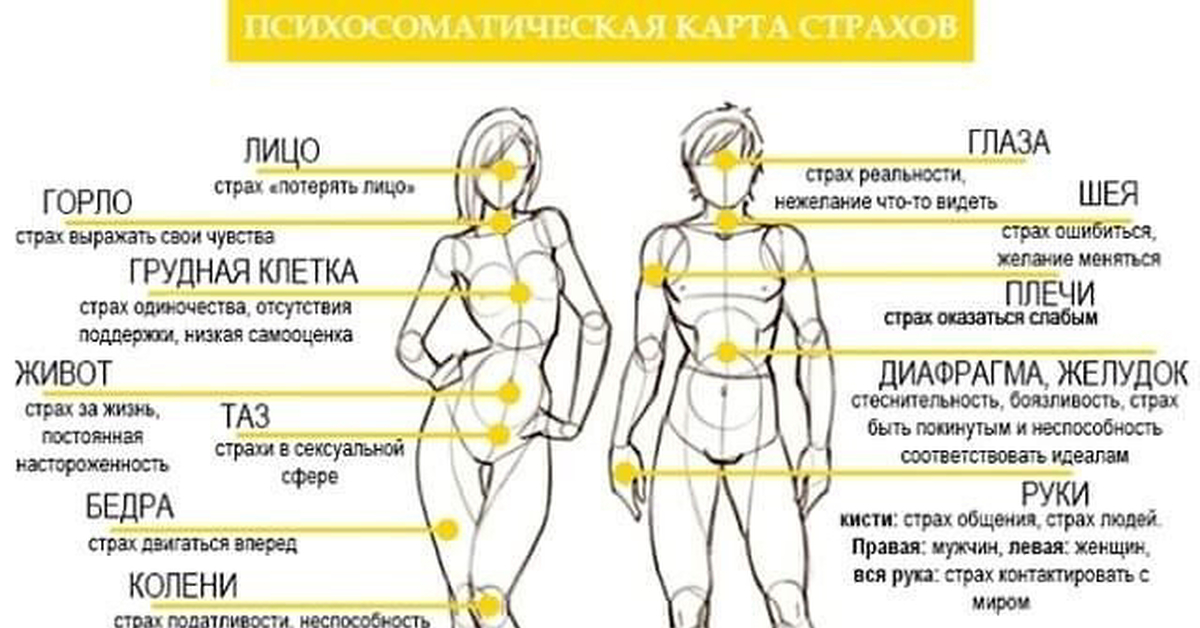
In a manner similar to a dermatomal map, each spinal cord segmental level from T1 to L2 is described as having a specific region of the body that it innervates, with each level identified using the newly-coined term “fibromatome.” The map is meant to supplement the radicular and peripheral nerve maps and to be applied in cases in which these maps do not apply or when the response to treatments for radicular or peripheral nerve pain are ineffective. Notably, the fibromatome map is unique in that at certain levels patients can develop almost hemi-body symptoms, and can account for pain complaints that are currently described as non-physiological. An understanding of fibromatomes may allow spine physicians to synergistically treat these conditions both pharmaceutically and interventionally.
Discovery
This concept was initially discovered after a number of patients who had undergone thoracic spine epidurals reported unex-pected relief of symptoms such as extremity pain or headaches. A classic example of this phenomenon is illustrated in Figure 1. The patient is a 37-year-old disabled gentleman with widespread pain diagnosed as vasculitic arthritis, who subsequently had significant relief of all of his widespread pain with thoracic nerve root procedures. The pain drawings, before and after the first two thoracic epidural steroid injections (TESIs), clearly indicate widespread relief of all left sided pain (notably, the right-sided pain was initially worse).
A classic example of this phenomenon is illustrated in Figure 1. The patient is a 37-year-old disabled gentleman with widespread pain diagnosed as vasculitic arthritis, who subsequently had significant relief of all of his widespread pain with thoracic nerve root procedures. The pain drawings, before and after the first two thoracic epidural steroid injections (TESIs), clearly indicate widespread relief of all left sided pain (notably, the right-sided pain was initially worse).
Because these epidurals typically produced a warm/hot sensation (similar to a sympathetic block) and were located within the thoracic spine, I reasoned that they were affecting sympathetically-med-iated pain. Over time, I recognized that these procedures positively affected complaints mediated by the autonomic nervous system—such as sinus congestion, reactive airway disease, IBS and bladder dysfunction, thermoregulatory dysfunction, Raynauds, and peripheral edema. This strengthened my belief that I was treating sympathetically-mediated pain. While these epidurals were the impetus to my current work using nerve root procedures, it is important to note that, as a treatment, they are problematic and may cause increasing pain if done without proper training.
While these epidurals were the impetus to my current work using nerve root procedures, it is important to note that, as a treatment, they are problematic and may cause increasing pain if done without proper training.
Figure 1. Pre- (a) and Post- (b) Treatment Pain Diagrams. Post-treatment diagram is three weeks after second TESI. Pain Diagrams such as these were the impetus to my belief that thoracic spine dysfunction could cause widespread pain.
Fibromatomes
I have defined fibromatomes as specific regions of referred sympathetic pain depending upon the level of the spine affected. The term fibromatome is analogous to dermatome. While a dermatomal pain pattern refers to the region innervated by the sensory afferents via a specific dorsal root ganglion, a fibromatomal pattern refers to the region of referred pain innervated by the sympathetic afferents that enter via a specific dorsal root ganglion (see Figure 2). Notably, although the initial work was done in fibromyalgia patients (hence the term fibromatomes), many patients without fibromyalgia will have similar pain generators (see case reports).
In much the same way as a patient presenting with low back pain radiating down the lateral leg to the dorsal foot that is completely relieved with a L5 nerve block has pain in an L5 dermatome; a patient with unexplained calf pain, (often associated with anterior thigh pain) which is completely relieved with a T9 nerve root procedure would be considered to have pain in a T9 fibromatome. Notably, this description of the T9 fibromatome is based upon a series of patients being successfully treated (i.e. 95+% relief for at least one month) for similar symptoms with T9 nerve root procedures. As the examples below indicate, these procedures have been done in patients with a variety of complaints and, even when successful, only treat specific regions of pain.
Example 1. A 50-year-old woman with generalized pain (i.e. severe fibromyalgia) presents with a chief complaint of left anterior thigh and posterior calf pain. Patient has radiological rotational/scoliotic abnormalites and tenderness to palpation at T9. Left T9 selective nerve root block (SNRB) provides the patient with 10 months of relief in the T9 fibromatome distribution (i.e. anterior thigh and posterior calf). All other pain remained stable following the SNRB.
Left T9 selective nerve root block (SNRB) provides the patient with 10 months of relief in the T9 fibromatome distribution (i.e. anterior thigh and posterior calf). All other pain remained stable following the SNRB.
Example 2. A 60-year-old gentleman with failed lumbar spine syndrome and intractable low back pain secondarily complains of a 50-year history of left (more so than right) calf pain (he had fallen off a roof when he was 10 years old). Patient has radiological rotational/scoliotic abnormalites (see Figure 3) and tenderness to palpation at T9. Left T9 SNRB provides the patient with 8 months of calf pain relief. A Left T9 pulsed radiofrequency of the dorsal root ganglion (PRFDRG) performed 4 months ago has provided the patient with no recurrence of calf pain. Low back pain remains severe.
Figure 2. Illustration of sympathetic afferents that enter via a specific dorsal root ganglion.¹
Figure 3. Radiological rotational/scoliotic abnormalities in 60-year-old man.
Understandably, this concept seems completely unique. However, I would like to point that all of us accept that cardiac ischemia often refers pain to the arm, neck, jaw, etc., and therefore already accept a phenomenon very similar to the concepts described in this paper. Basic science research that is consistent with a similar mechanism includes studies showing cardiac ischemia causes increased amplitude on EMG over T4-5 in dogs,² and that myocardial ischemia is mediated by sympathetic afferents in cats.³
X-Ray Abnormalities
As described in the above examples, there are often notable scoliotic and/or rotational changes at affected levels (usually within the thoracic spine). Notably, these skeletal abnormalities are oftentimes much more impressive than underlying cervical and lumbar spine dysfunction which are not easily seen using plain x-rays. These abnormalities can be very impressive such as in Figure 4a, a patient who was told by repeated doctors that she should not have widespread pain because there was nothing wrong with her. Figure 4b illustrates her initial pain diagram (pre-) and a recent post-treatment diagram after undergoing a number of thoracic spine procedures.
Figure 4b illustrates her initial pain diagram (pre-) and a recent post-treatment diagram after undergoing a number of thoracic spine procedures.
Figure 4a. Female patient with impressive skeletal abnormalities.
Figure 4b. Pre- (a) and Post-Treatment (b) pain diagrams for this patient after thoracic spine procedures.
Fibromatome Map
These maps were developed by evaluating pain diagrams before and after selective nerve root blocks (at least 1 to 2 weeks) and, more recently, pulsed radio-frequency of the dorsal root ganglion. Notably, the latter method—being more effective, less painful, much safer and technically easier—is the only method I currently use. Also, of note at the level in which the DRG/SNRB is performed, I have been doing medial branch block procedures but have come to believe it is the former procedure that is providing the greater amount of relief. In regards to the validity of this map from an interventional spine perspective, the author would like to reiterate or point out the following observations:
Involved regions of the spine are typically tender to palpation and have abnormalities under x-ray, usually with rotational or scoliotic changes.

The case reports presented all report 95 to 100% relief of symptoms in involved regions (unless otherwise noted).
The case reports presented all have had at least 1 month of relief (unless otherwise noted).
The case reports presented all have had chronic intractable pain (unless otherwise noted).
These patients typically have undergone other procedures including, in some cases, surgery without relief of pain in involved regions and usually have other painful regions that are not affected by the specific procedure described.
The thoracic nerve root procedures were performed without conscious sedation in a manner that involved eliciting dysesthesia in a dermatomal pattern of the treated nerve root (along with proper spread of contrast). These are the most painful therapeutic procedures that I have performed and it seems unlikely to be a placebo response in patients who return for additional procedures.
The following case reports represent examples of the most commonly seen pain patterns and distributions (i. e., mapping). However, there is a great deal of overlap among levels and, at all levels, partial, alternative or more widespread patterns are seen. Ultimately, fibromatomal patterns are much more complicated then dermatomal patterns and the effective treatment of referred sympathetic pain with selective nerve procedures is a much more complicated process. On the other hand, effectively treating these referred sympathetic pain syndromes can be more rewarding due to the improvement in the co-existing autonomic dysfunction. Treatment for these referred sympathetic pain syn-dromes should only be initiated after spinal interventions for somatic pain syndromes are exhausted or are highly unlikely to provide improvement. I believe they should be considered prior to spinal surgery unless the case is straightforward (i.e., herniated disc with nerve root impingement).
e., mapping). However, there is a great deal of overlap among levels and, at all levels, partial, alternative or more widespread patterns are seen. Ultimately, fibromatomal patterns are much more complicated then dermatomal patterns and the effective treatment of referred sympathetic pain with selective nerve procedures is a much more complicated process. On the other hand, effectively treating these referred sympathetic pain syndromes can be more rewarding due to the improvement in the co-existing autonomic dysfunction. Treatment for these referred sympathetic pain syn-dromes should only be initiated after spinal interventions for somatic pain syndromes are exhausted or are highly unlikely to provide improvement. I believe they should be considered prior to spinal surgery unless the case is straightforward (i.e., herniated disc with nerve root impingement).
Surprisingly, a number of the levels treat arthralgias—more so than neuropathic-type pain. This seems counter-intuitive. However, the joint pain in fibromyalgia, long considered a rheumatological condition, is actually due to neurological dysfunction according to many recent studies.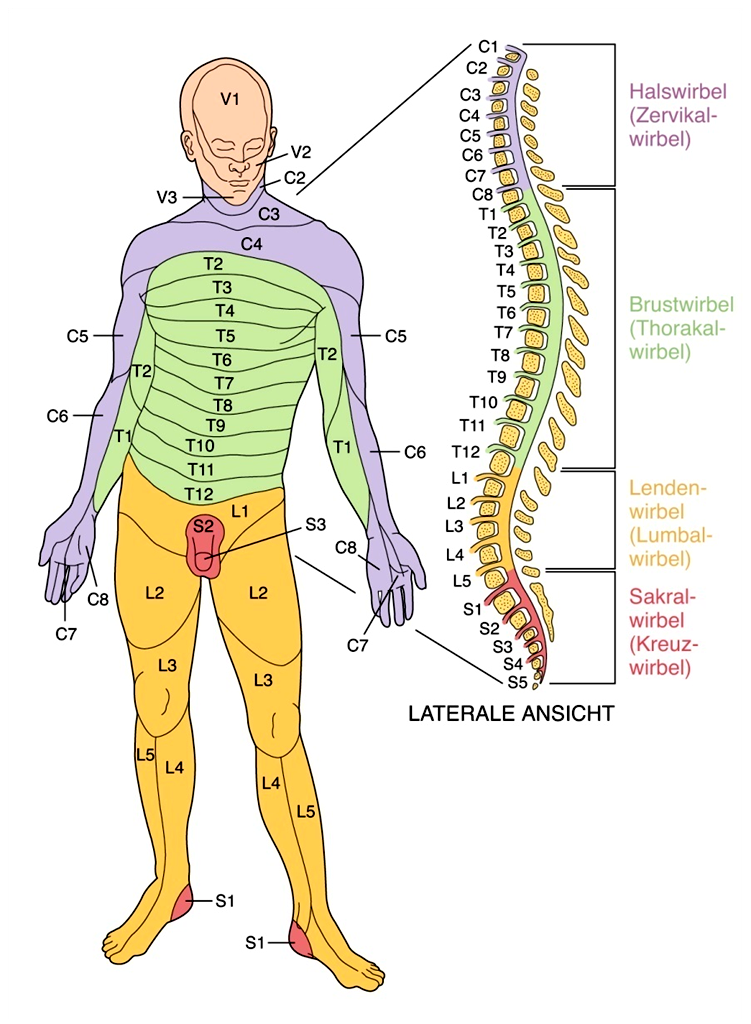 The fibromatome map is the link, via the autonomic nervous system, that answers this previously unexplained phenomenon. Notably, these patients are often diagnosed with arthritis but clinically it seems they can be distinguished from true arthritis by the fact that they often relieve pressure in their joints by writhing or popping the involved joints. In addition to the discovery of various arthralgias being due to thoracic spine conditions, the author would like to point out that some of the case reports include the discovery of other thoracic spine-mediated conditions including headache, pseudo-radiculopathy, and pseudo-poly-neurpathy.
The fibromatome map is the link, via the autonomic nervous system, that answers this previously unexplained phenomenon. Notably, these patients are often diagnosed with arthritis but clinically it seems they can be distinguished from true arthritis by the fact that they often relieve pressure in their joints by writhing or popping the involved joints. In addition to the discovery of various arthralgias being due to thoracic spine conditions, the author would like to point out that some of the case reports include the discovery of other thoracic spine-mediated conditions including headache, pseudo-radiculopathy, and pseudo-poly-neurpathy.
In addition to the descriptions of the fibromatomal levels, I have included summaries and case reports for some of the levels that I most commonly treat.
T1: Lateral posterior neck to upper trapezius without radiation into arm increased with arm abduction towards 180 degrees; may be associated with distal arm and hand symptoms.
T2: Key feature is tightness of lateral arm from shoulder to elbow with arm abduction to 180 degrees; in addition to improving pain in this region, T2 RF DRG’s have provided some patients with relief of lower extremity symptoms.
T3: Pain and tightness in scapular region with or without arm referral with arm abduction to 180 degrees; no clear mapping pattern has been elucidated.
T4: Key feature is tightness of dorsal arm from shoulder to elbow with arm abduction to 180 degrees; often associated with joint pain (most notably wrist, knee, and ankle).
Figure 5. Thoracic region scoliosis including T4-T5 level of patient with acute wrist pain.
Figure 6. Example of female patient with T5-6 scoliosis and rotational changes. Patient presented with intractable headaches, polyneuropathy type symptoms and fibromyalgia which was relieved with T5 nerve root procedure.
Figure 7. Pain diagram for 60-year-old woman with failed neck and back surgery syndrome.
Case Report T4-a. A 60-year-old gentleman who is status post (s/p) 10 different pain-related surgeries with marginal-to-poor results presented acutely with right wrist pain, swelling, and decreased range of motion. Associated complaints included mid scapular region pain and tightness of dorsal proximal arm with abduction to 180 degrees. In September of 2009, a Right T4 SNRB was performed with near immediate complete relief of symptoms for six weeks. A Right T4 PRFDRG performed in October 2009 has continued the relief without recurrence to date (January 20, 2010). Notably, nearly every region (except right low back) has been successfully treated using similar procedures (see Figure 5).
Associated complaints included mid scapular region pain and tightness of dorsal proximal arm with abduction to 180 degrees. In September of 2009, a Right T4 SNRB was performed with near immediate complete relief of symptoms for six weeks. A Right T4 PRFDRG performed in October 2009 has continued the relief without recurrence to date (January 20, 2010). Notably, nearly every region (except right low back) has been successfully treated using similar procedures (see Figure 5).
Case Report T4-b. A 40-year-old gentleman with multiple pain complaints who reported episodes of all-over body pain occurring on a daily basis. These episodes always begin with right wrist pain and within one hour spreads to the right greater than left side of his body. The patient was usually incapacitated for a few hours. The patient is s/p a Right T4 SNRB in March of 2009 with complete relief of right-sided arthralgias and low back pain (does have some ongoing right-sided neck pain) to date. The patient underwent a Left T4 DRG on January 29, 2010 for left-sided symptoms.
Case Report T4-c. A 35-year-old female presents with fibromyalgia with right shoulder pain. She underwent a Right T4 PRFDRG on December 14, 2009. She returned 2 weeks later stating the procedure was not successful for the shoulder pain but, incidentally, her right wrist and ankle felt much better (these were not mentioned as regions of significant pain prior to the procedure). Subsequently, a Right T2 PRFDRG on December 28, 2009 provided excellent relief of shoulder and axial spine pain as well as generalized fibromyalgia symptoms including fatigue, myalgias, etc., to date.
T5: Key feature #1 is parasthesias, numbness, and pain of the entire arm and oftentimes fingers with arm abduction to 180 degreess. Key feature #2 is posterior leg pain. Also frequently, hands and feet pain and parasthesias (distal more so then proximal; e.g., tips of fingers and toes).
Case Report T5-a. A 52-year-old woman with a long history of fibromyalgia involving extremities diffusely with parasthesias and pain radiating to upper and lower extremity digits (the leg symptoms are primarily in the posterior distribution). Patient is s/p Left T5 SNRB in October 2008 for left arm pain without re-occurrence of symptoms. She is s/p Right T5 SNRB in March 2009 for right greater than left posterior leg pain, and right arm pain without re-occurrence of symptoms for seven months. Patient is s/p Right T5 PRFDRG on December 2, 2009 for distal (elbow to hand and knee to foot) extremity and neck pain (right side only in upper extremity and right greater then left in neck and legs) without re-occurrence of right-sided symptoms to date (two months). Patient reports relief of all fibromyalgia symptoms (i.e. fatigue, IBS, etc) as long as extremity pain is kept at bay.
Patient is s/p Left T5 SNRB in October 2008 for left arm pain without re-occurrence of symptoms. She is s/p Right T5 SNRB in March 2009 for right greater than left posterior leg pain, and right arm pain without re-occurrence of symptoms for seven months. Patient is s/p Right T5 PRFDRG on December 2, 2009 for distal (elbow to hand and knee to foot) extremity and neck pain (right side only in upper extremity and right greater then left in neck and legs) without re-occurrence of right-sided symptoms to date (two months). Patient reports relief of all fibromyalgia symptoms (i.e. fatigue, IBS, etc) as long as extremity pain is kept at bay.
Case Report T5-b. A 38-year-old woman with fibromyalgia and severe headaches/ migraines. In regards to the patient’s headaches, she has numerous failed therapies including hysterectomy since her headaches were exacerbated by her menses. Patient’s fibromyalgia primarily involves neck and right greater than left parasthesias of the extremities. Patient is s/p Right T5 SNRB in May 2009 with near complete relief of headaches and fibromyalgia for five months. Symptoms re-occurred in November 2009 but subsequently involved the left side. Patient is s/p Left T5 PRFDRG on November 17, 2009 with relief of symptoms to date (see Figure 6).
Symptoms re-occurred in November 2009 but subsequently involved the left side. Patient is s/p Left T5 PRFDRG on November 17, 2009 with relief of symptoms to date (see Figure 6).
Case Report T5-c. 60 year old woman with failed neck and back surgery syndrome who presented with left arm pain and numbness in a radicular distribution radiating to the thumb (see Figure 7). The patient is status post Left T5 PRFDRG on 10/21/09 with 100% relief for 4 months.
T6: Key feature is pattern of joint pain involving hands, elbows, knees, and feet. Also can cause regions of pain including scapular/trapezius and greater trochantor.
Case Report T6-a. A 58-year-old female with fibromyalgia is s/p a number of pro-cedures with relief of various painful regions presented with glove and stocking pattern of neuropathic and arthritic symptoms. Patient is s/p Right T6 PRFDRG on 11/17/09 without any re-occurrence of these symptoms to date.
Case Report T6-b. 32-year-old female with lumbago and bilateral knee pain (right greater than left) who is s/p Right T6 SNRB x 2, each of which gave her approximately six weeks of relief of her knee and, to a lesser degree, back pain. Patiently subsequently underwent a Right T6 PRFDRG on November 15, 2010 with complete relief of her knee pain to date. Notably, patient’s knee pain had specific clinical features that help to identify knee pain due to a referred sympathetic phenomenon versus an intrinsic joint pain syndrome. These included severe tightness posteriorly radiating six inches above and below the joint and severe pain overnight and first thing in the morning that improved with ambulation.
Patiently subsequently underwent a Right T6 PRFDRG on November 15, 2010 with complete relief of her knee pain to date. Notably, patient’s knee pain had specific clinical features that help to identify knee pain due to a referred sympathetic phenomenon versus an intrinsic joint pain syndrome. These included severe tightness posteriorly radiating six inches above and below the joint and severe pain overnight and first thing in the morning that improved with ambulation.
T7: Key feature is widespread pain oftentimes involving entire arm and sometimes hand as well as lateral leg.
Case Report T7-a. 50-year-old gentleman with intractable low back and lateral leg pain without foot pain is s/p numerous interventional spinal procedures and failed lumbar spine surgery who is s/p Left T7 PRFDRG on December 12, 2009 and Right T7 PRFDRG on January 4, 2010 without any re-occurrence of symptoms.
T8: Key feature is low back pain; can be associated with leg pain, oftentimes involving anterior shin or knee.
Case Report T8-a. 44-year-old male with fibromyalgia-type symptoms (i.e. diffuse pain associated with fatigue, etc.) with failed lumbar spine. Numerous spinal interventions including rhizotomy failed to provide patient with significant relief of his low back pain, and he required two canes to ambulate safely due to his legs giving out. Subsequently, patient underwent four consecutive Left T8 SNRB’s that provided approximately two months of low back pain relief (concurrently SNRB’s would also relieve migraines). On January 3, 2010, the patient underwent a failed Left T8 PRFDRG (soon after determined that the probe was malfunctioning) which markedly increased lumbago, headache, and episodes of sudden leg weakness. Procedure successfully repeated on January 20, 2010 with complete relief of all symptoms and patient stating he felt wonderful.
Case Report T8-b. A 54-year-old female is s/p seven back surgeries without significant relief who presented with severe lumbago (left low back worse).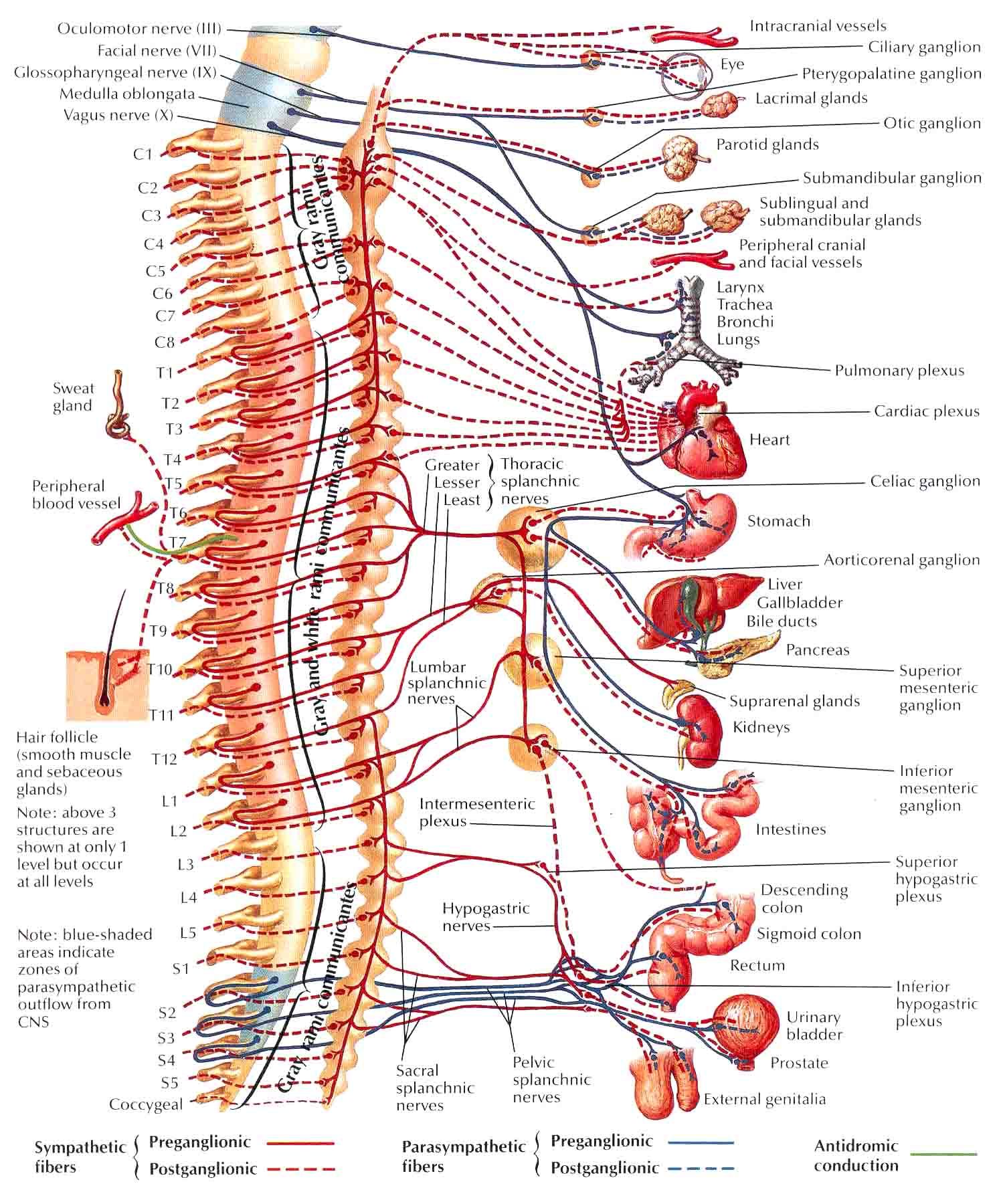 Pain radiated into left greater trochanteric region and anterior shin. Right leg pain in an L5 distribution. Patient is s/p Left T8 SNRB in October 2008 with complete relief of left low back and leg pain to date. Notably, Right L5 PRFDRG/SNRB aborted due to anatomy.
Pain radiated into left greater trochanteric region and anterior shin. Right leg pain in an L5 distribution. Patient is s/p Left T8 SNRB in October 2008 with complete relief of left low back and leg pain to date. Notably, Right L5 PRFDRG/SNRB aborted due to anatomy.
T9: Key feature is calf pain, oftentimes associated with anterior thigh pain; can cause more widespread pain including involvement of upper body.
Case Report T9-a. A 44-year-old female with fibromyalgia including prominent fatigue, most notable region of pain involved the right anterior thigh and (posterior) calf. Patient is s/p Right T9 SNRB in January 2009 with complete relief of lower extremity pain as well as all fibromyalgia complaints through December 2009. Notably patient had other thoracic nerve root procedures performed but this level seemed most beneficial for her generalized fibromyalgia complaints.
T10: Key feature is low back pain radiating to, and associated with, knee pain.
Case Report T10-a. A 39-year-old female with a 6-year history of right knee pain following a fall. Patient is s/p two knee surgeries without significant change in symptoms. Patient also with right greater than left low back pain that radiates down anterior thigh to right knee. Patient s/p Right T10 SNRB in November 2008 without any re-occurrence of symptoms.
A 39-year-old female with a 6-year history of right knee pain following a fall. Patient is s/p two knee surgeries without significant change in symptoms. Patient also with right greater than left low back pain that radiates down anterior thigh to right knee. Patient s/p Right T10 SNRB in November 2008 without any re-occurrence of symptoms.
T11: Key feature is lumbago radiating posteriorly to ankle without foot involvement.
Case Report T11-a. A 54-year-old male with intractable low back pain (left more so than right) radiating into posterior leg down to ankle without involvement of feet underwent Left T11 PRFDRG on January 12, 2010. Patient reports 100% relief of left-sided symptoms on February 4, 2010.
T12: Key feature is lumbago radiating posteriorly down leg with foot involvement.
L1: Key feature is lumbago radiating posteriorly to knee.
L2: Key feature is lumbago radiating to buttock, possibly to knee.
These cases reiterate that fibromatome patterns in a particular individual patient may include additional regions or have more limited distributions. Fibromatome patterns are more complicated then derm-atome patterns. However, as described in some of the fibromyagia patients that when the proper fibromatome is treated, the benefits can extend far beyond pain relief and the treatment can make a remarkable improvement in a patient’s quality of life.
Fibromatome patterns are more complicated then derm-atome patterns. However, as described in some of the fibromyagia patients that when the proper fibromatome is treated, the benefits can extend far beyond pain relief and the treatment can make a remarkable improvement in a patient’s quality of life.
Discussion
The description of a referred pain map due to sympathetic dysfunction at specific levels of the spine is a wholly unique concept in the field of interventional spine medicine. Therefore, I will briefly discuss a few topics that I believe to be supportive of this concept.
Anatomical. Unlike the somatic portion of the nervous system, sympathetic fibers often travel vertically within the sympathetic chain and there is a great deal of variation in pre- and post-ganglionic nerve travel distal to the spinal cord. Finally, the sympathetic neurons that innervate the entire body are all located within the thoracic and upper lumbar regions of the spine and thus inherently innervate regions of the body in a pattern that is non-dermatomal. Given these anatomical features, it is within reason that a mapping pattern—totally unique from the somatic nervous system—is possible.
Given these anatomical features, it is within reason that a mapping pattern—totally unique from the somatic nervous system—is possible.
Neurological. Every component of the nervous system that is anatomically well understood is highly organized. This seems completely logical when one considers the possibility of a disorganized nervous system. Given the complicated functions of the autonomic nervous system throughout the body, it has to be highly organized. This has to involve all components of the ANS, including the sympathetic afferents at the dorsal root ganglion. Even if the map that I am presenting is not ultimately correct, there indeed has to be a high degree of ANS organization that has yet to be understood
Embryological. A detailed discussion regarding this topic is beyond the scope of this paper. However, my review of the literature is notable for statements indicating that spinal neurons involved with the autonomic nervous system do project superiorly and inferiorly. For example, Cornbrook et al, describe “T4 projections to the cervical level arise from cells clustered in the rostral end…while T4 projections to lumbar chain ganglia arise from cells clustered in the caudal end of the T4 caudal pool.”⁴
For example, Cornbrook et al, describe “T4 projections to the cervical level arise from cells clustered in the rostral end…while T4 projections to lumbar chain ganglia arise from cells clustered in the caudal end of the T4 caudal pool.”⁴
Radiological. As mentioned above, rotational/scoliotic abnormalities are typ-ically noted at involved regions under X-ray. In some cases, the abnormalities are quite impressive. For example, the patient in Figure 4, had for years been told that there was nothing wrong with her that could be causing her widespread pain, yet patients with much more subtle cervical and lumbar abnormalities—seen only with MRI—are readily diagnosed with a physiological pain generator. Again, even if the fibromatomal map that I am describing is not correct, the specialty of interventional spine needs to address the issue of widespread pain in patients with significant scoliotic/rotational abnormalities and tenderness to palpation of the thoracic spine.
Basic Science. A detailed discussion of the basic science work that has been done on fibromyalgia is beyond the scope of this paper. However, it is notable that the basic science information available is consistent with my work. I will review a few of these studies:
A detailed discussion of the basic science work that has been done on fibromyalgia is beyond the scope of this paper. However, it is notable that the basic science information available is consistent with my work. I will review a few of these studies:
Functional analysis of the autonomic system in fibromyalgia patients has demonstrated disturbed activity characterized by hyperactivity of the sympathetic nervous system.⁵
Fibromyalgia patients have lower heart rate variability, indicating sustained sympathetic hyperactivity.⁶
The mean CSF concentration of Nerve Growth Factor, a substance known to participate in functional plasticity within the dorsal root ganglion and spinal cord is elevated.⁷
Multiple studies have shown elevated CSF levels of Substance P, which is a putative nociceptive neurotransmitter.⁸
Current pharmaceutical industry commercials present information indicating that fibromyalgia is due to nerve hypersensitivity (i.
 e. DRGs) causing widespread pain.
e. DRGs) causing widespread pain.
Medical. Many patients with pain do not respond maximally to therapies for somatic pain such as spinal/joint injections and surgeries, the most obvious example being fibromyalgia. Therefore, an alternative component of the nervous system must be involved. The sympathetic nervous system via a referred pain mechanism is one of very few mechanisms possible and is therefore worthy of consideration.
Conclusion
Clearly, what is described in this paper will be outside of the intellectual comfort zone of most readers. The obvious criticism being the fact that it is not a double- blinded study and that such studies will need to be performed to prove the existence of fibromatomes.
Logic and experience do tell us that with interventional spine procedures, especially with procedures as painful as selective thoracic nerve root procedures, it seems unlikely that patients will report false positive results. It seems even less likely that they will report pain relief in specific regions.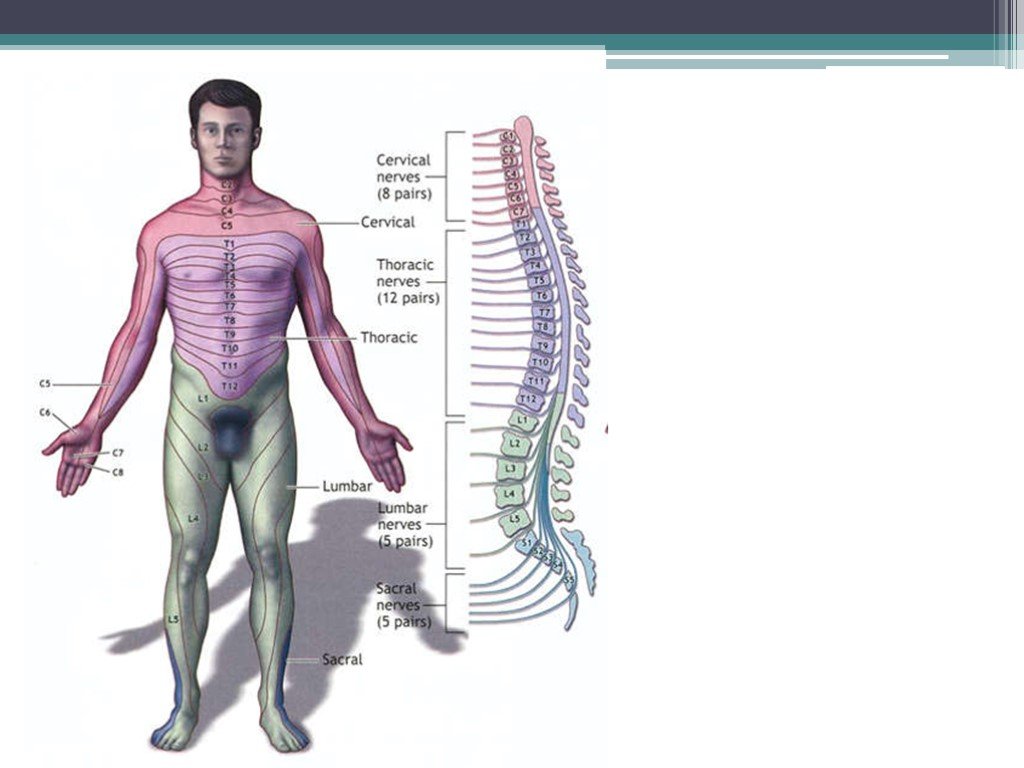 For these reasons, I am hopeful that my colleagues will accept this paper for what it is: a descriptive report of this phenomenon.
For these reasons, I am hopeful that my colleagues will accept this paper for what it is: a descriptive report of this phenomenon.
I would like to also point out to my interventional spine colleagues that in many cases we really do not know the mechanism of the disease we are treating. We have all seen patients that are not responsive—or even worsened (failed spine syndrome)—by what we believe to be the best and most expensive treatments that modern medicine has to offer. Similarly, we have all walked into an exam room only to see a patient who appears to be in obvious misery, with a laundry list of symptoms, yet we have no idea what the cause of their suffering is and have little to offer. Clearly, we and other practitioners who treat pain issues are missing something in these cases.
For this reason, I believe that my work, which identifies an alternative pain generator, is worthy of consideration by pain practitioners. My recommendation for my colleagues is that when they are faced with a difficult case, especially in a patient with widespread pain, that they examine the thoracic spine under x-ray for rotational/scoliotic regions that are tender to palpation.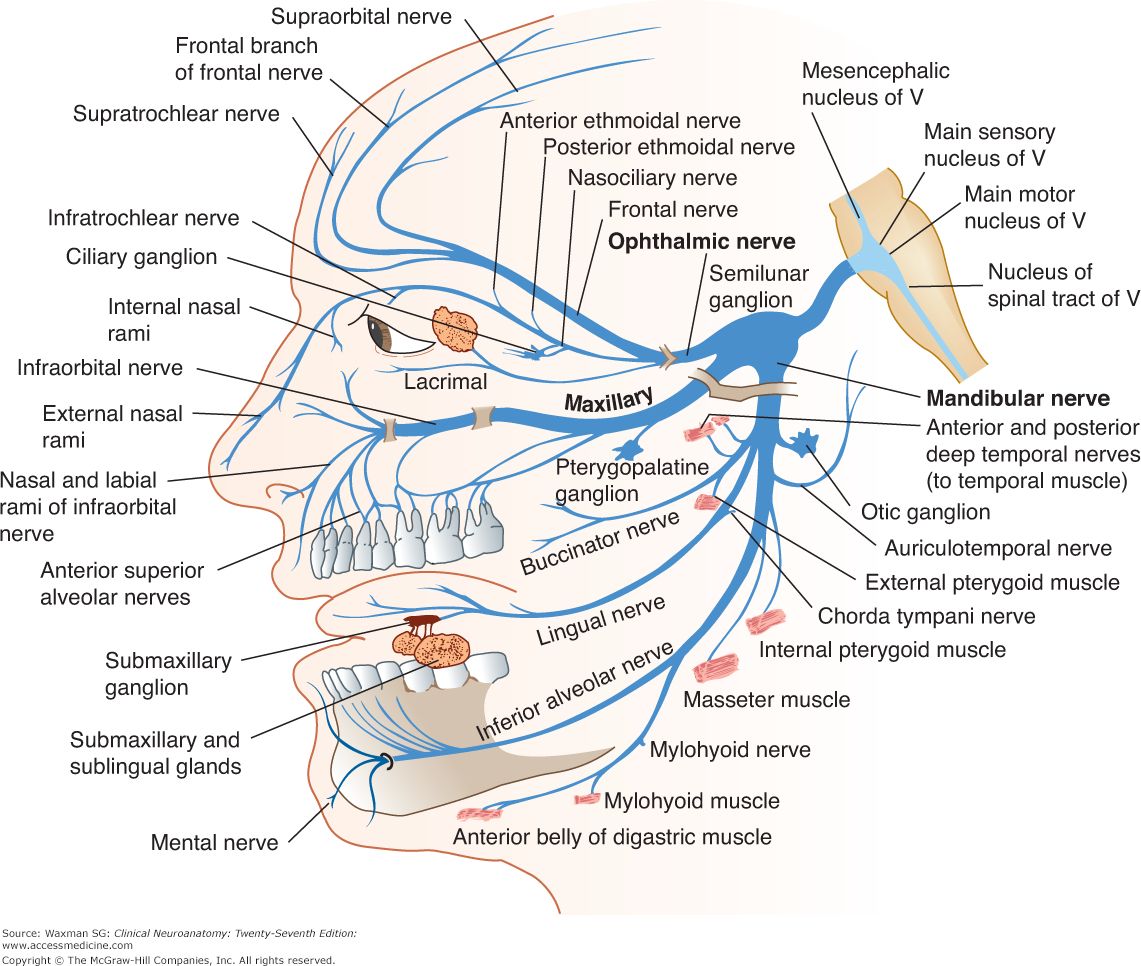 Having said that, I very strongly recommend against initiating any injections in these areas since, without proper training, these procedures are likely to be detrimental (e.g., pain flare up or possibly spread the pain).
Having said that, I very strongly recommend against initiating any injections in these areas since, without proper training, these procedures are likely to be detrimental (e.g., pain flare up or possibly spread the pain).
Although my interest in this phenomenon may be completely unique, I am hopeful that there are others who have a similar interest. I would very much appreciate and am eager to work with anyone of a similar mind set. I can be contacted through the Society of Scoliosis and Fibromyalgia Spinal Injectionists. I must mention that I have patented these treatment protocols, which I think is important to protect patients, but will provide full privileges to individuals who contact me and are interested in the treatments described.
- 1. Witmer, LM, Power Point Presentation. Peripheral Nervous System 2: The Autonomic System. 17 Aug 2009 slide 17.
- 2. Gwirtz, PA, Dickey J, Vick D, et al. Viscero-Somatic Interaction Induced by Myocardial Ischemia in Conscious Dogs.
 Journal of Applied Physiology. August 2007. 103: 511-517.
Journal of Applied Physiology. August 2007. 103: 511-517. - 3. Pan HL and Chen SR. Myocardial ischemia recruits mechanically insensitive cardiac sympathetic afferents in cats. Journal Neurophysiology. Feb 2002. 87(2):660-668.
- 4. Cornbrooks EB et al. Development of differential Preganglionic Projections to Pre and Paravertebral Sympathetic Ganlia. J of Comparative Neurology. 1997. 382: 1-18.
- 5. Martinez-Lavin M., Biology and Therapy of Fibromyalgia. Stress, the stress response system, and fibromyalgia. Arthritis Res Ther. 2007. 9(4): 216.
- 6. Martinez-Lavin M, Hermosillo AG, Mendoza C, et al. Orthostatic sympathetic derangement in subjects with fibromyalgia. J Rheumatology. 24(4): 714-718.
- 7. Giovengo SL, Russell IJ, and Larson AA. Increased concentrations of nerve growth factor in cerebrospinal fluid of patients with fibromyalgia. J Rheumatology. 26 (7): 1564-1569.
- 8. Russel IJ, Orr MD, Littman B, et al. Elevated cerebrospinal fluid levels of substance P in patients with the fibromylagia syndrome.
 Arthitis Rheum. 37(11): 1593-1601.
Arthitis Rheum. 37(11): 1593-1601.
Tattoo pain map – the most painful places for tattoos
Contents of the article
1. How can tattoo pain be compared?
2. Main pain areas
3. Differences in pain threshold in women and men
4. How to reduce pain during a session?
5. Do’s and don’ts before the session
Deciding to get a tattoo is not always easy. There are many factors that scare a beginner in this business, and one of the main ones is pain. Today we are talking about exactly this: does it hurt to beat a tattoo, how different sensations can differ in men and women, and also how to reduce pain and less stress.
What does the pain of a tattoo compare to?
Pain is one of the body’s mechanisms that helps us survive. It signals that we need to treat something, patch it up, seek help from a doctor.
By the way, there is a rare disease in which a person does not feel pain. It would seem that this should be great, especially for lovers of tattoos and piercings, but these people do not feel fractures, symptoms of serious illnesses and dangerous wounds.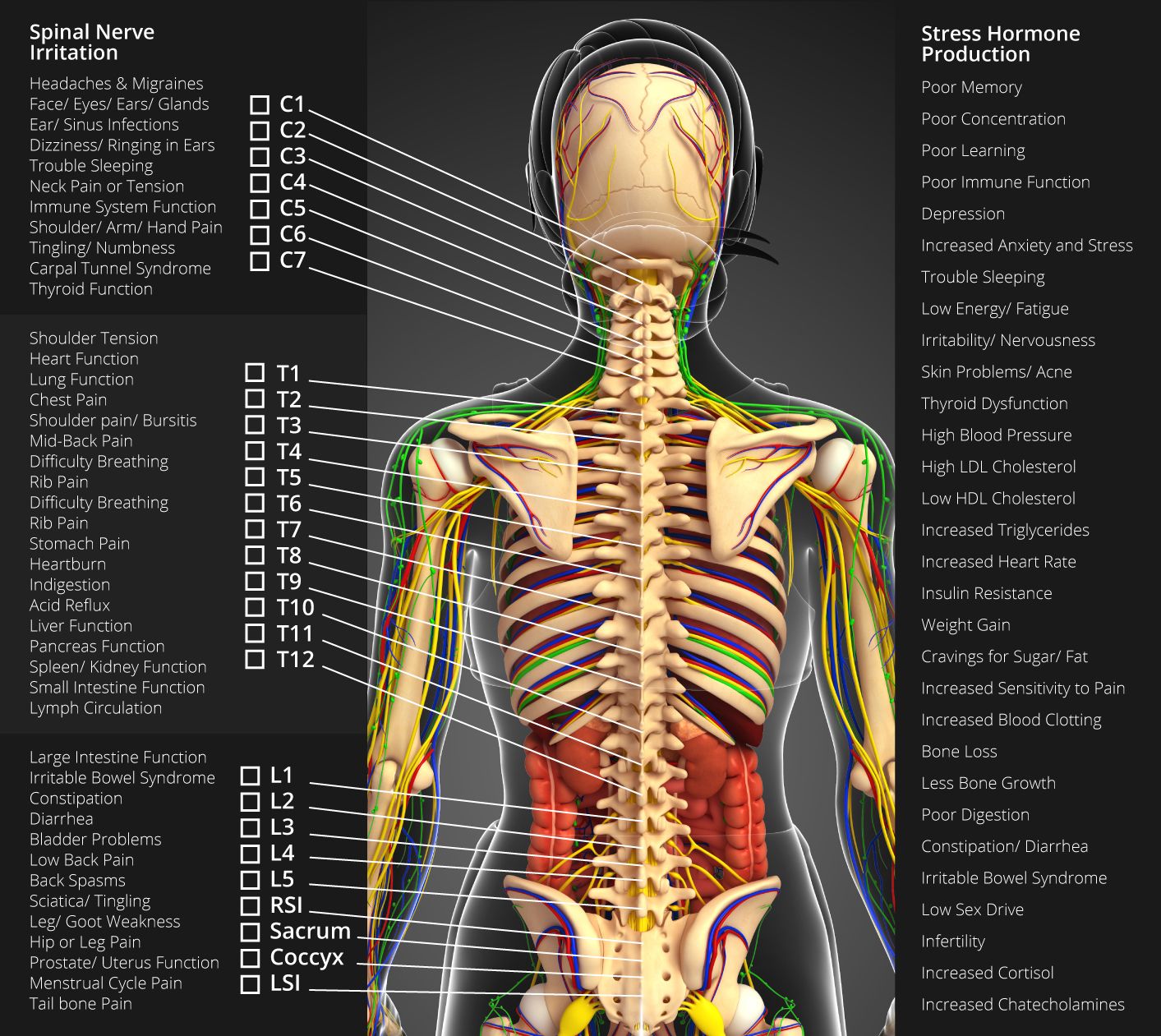 In general, nothing good.
In general, nothing good.
The neurons in our nervous system, which are connected in a huge network throughout the body, help us feel pain. It is neurons that respond to external interference and internal problems and transmit a signal to the brain. At this moment we feel pain. And the more dangerous the situation, the more acute it is.
Given the relationship between pain and the nervous system, it is logical to draw a simple conclusion: the most painful place for a tattoo is where there are more nerve endings.
A tattoo is an extensive and shallow injury to the surface of the skin, so it feels most like a similar type of injury – abrasions and burns. In general, does it hurt to get a tattoo? If you had “asphalt disease” as a child, then the sensations after a knee tattoo session will take you back to the past and wrap you in pleasant (no) nostalgia for abrasions on your knees that healed for a long time and painfully.
Speaking of pain in different places: we have compiled a rating of places where it hurts to get a tattoo – it will help you better prepare for the session. It is important to note that each organism is unique and the pain threshold can vary, so the data is very average. Mark the most “sharp” painful places of the tattoo and take note before the session.
It is important to note that each organism is unique and the pain threshold can vary, so the data is very average. Mark the most “sharp” painful places of the tattoo and take note before the session.
High degree of pain
Head
Especially the face, earlobes and skull area
Neck
Most of the front, but the back will also have to suffer. It will also hurt in the area above the collarbones
Chest, torso and back
Tattoos on the areolas of the nipples, in the area of the ribs in front and under the shoulder blades will cause trouble. Ay!
Hip area
Intimate tattoos will not bring pleasure. And yes, we are talking about the most sensitive places and their immediate neighborhood
Legs
Inner side of the thigh, knees, knee bend at the back and front of the lower leg – just brr
Moderate pain
Chest and torso
Tolerable in the region of the collarbones and chest
Back
Shoulders and lower back. It will take a couple of hours to get used to it
It will take a couple of hours to get used to it
Hip area
Tattoos on the buttocks and right under them. It will hurt, but be bearable
Stomach
On average, tattoos on the stomach do not cause little inconvenience, but you will have to endure
Hands
Prepare for moderate pain when you clog your hands and fingers
Legs
Front thigh, calf and instep. You will have to close your eyes more than once
The minimum degree of pain
Head
It is also in the first list, but here we would like to mention tattooing, which is often a regular procedure for ladies
Hands
Shoulders and forearms. Breathe, you’ll be fine!
Lumbar region
It will even tickle on the sides under the ribs, but this is not accurate
Hip region
On the sides and again the buttocks are on the list, tattoos on which are a mere trifle for many
Legs
Lateral part of the thigh, lateral part of the lower leg, ankles and foot – you can also sleep in the session
Mucous
tattoos that are made in the mouth on the inside of the lip
Differences in the pain threshold in women and men
We live in an age of equality, but mother nature had completely different plans and made men and women physiologically different, therefore the scheme of tattoo pain theirs is different. In fact, official science cannot in any way agree on the difference between the pain threshold in men and women, but most scientists are inclined to believe that the tattoo pain map for girls has fewer “red zones”, since women still endure pain more easily, because their body is better prepared for it (by nature, ladies have a more painful role in reproduction than gentlemen).
In fact, official science cannot in any way agree on the difference between the pain threshold in men and women, but most scientists are inclined to believe that the tattoo pain map for girls has fewer “red zones”, since women still endure pain more easily, because their body is better prepared for it (by nature, ladies have a more painful role in reproduction than gentlemen).
Tattoo artists notice that girls tolerate tattoo sessions better. If we made the list from the previous section separately for men and women, ladies would have more places in the “green zone”. For example, the entire back and buttocks. So we can say that the tattoo pain map for men would be more “red” than for women.
In any case, as we said earlier, the tattoo pain map is very individual, and you can easily meet both men and women who endure tattoo sessions either as a light tickle or as a moderate operation.
How to reduce pain during a session
Before looking for a suitable topical pain reliever (only these can be used! no injections), do some psychological preparation for the session (whether you are a master or a client: the master can also prepare the client for the session and reassure): after all, they say the truth, the devil is not as scary as he is painted, so the devil, who sits on his shoulder and whispers about hellish and unbearable pain, is sent to his brothers.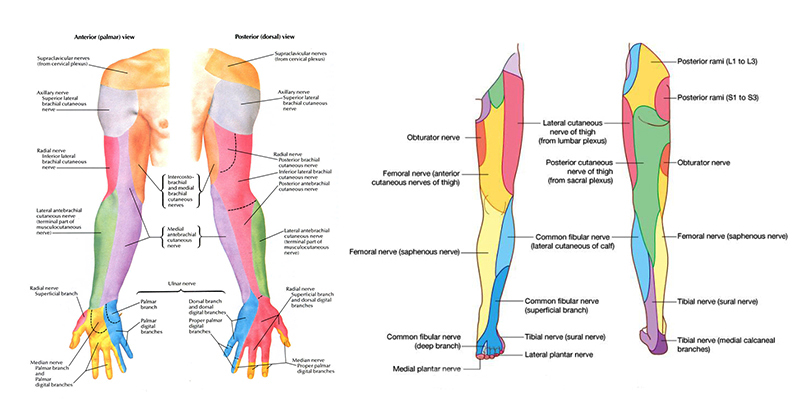 Remember how many people with tattoos walk around our planet. Most of them will say that getting tattoos is painful but tolerable and 100% worth it. All in all, less stress! Calmness and good mood will be very helpful during the session.
Remember how many people with tattoos walk around our planet. Most of them will say that getting tattoos is painful but tolerable and 100% worth it. All in all, less stress! Calmness and good mood will be very helpful during the session.
Be sure to take care not only of your moral state, but also of your physical state: get a good night’s sleep, eat well, and in no case go to a session sick. A healthy, vigorous and strong body will endure pain better!
Carefully study the tattoo pain zones and remember the most unpleasant points. And finally, what should be used last and we would recommend this method of dealing with pain only for people with a very low pain threshold or for the most delicate and painful places – painkillers. They can be used where the tattoo hurts the most, but there are a few caveats.
Firstly, they interfere with work, as they “freeze” the skin, which contributes to the pigment falling out (and correction is another portion of pain), and anesthetics distort colors. By the way, an interesting fact: painkillers “calm” the pain points of the tattoo only during the session, which means that when he “lets go”, you will feel everything at once and even more intense and sharper, but the pain will last much less time than the session .
By the way, an interesting fact: painkillers “calm” the pain points of the tattoo only during the session, which means that when he “lets go”, you will feel everything at once and even more intense and sharper, but the pain will last much less time than the session .
TKTX Deep Numbs If you decide to use an anesthetic, let me recommend our bestseller. A tool that has long established itself among tattoo artists. It is applied under the film half an hour before the session and has an analgesic effect on the most painful places for a tattoo up to 3-4 hours. TKTX is good in that its harmful effects during the session are minimal, and the effectiveness is high.
|
Do’s and Don’ts before the session
In general, we have already touched on this topic in the previous part of our article.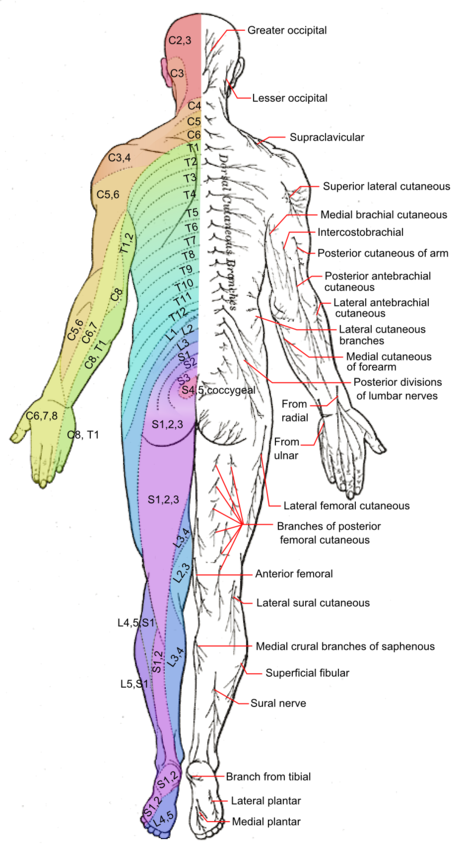 It is absolutely impossible to exhaust your body morally and physically. You can not drink alcohol, as it increases bleeding and interferes with the work of the master. It is strictly forbidden to take painkillers and do any painkiller injections.
It is absolutely impossible to exhaust your body morally and physically. You can not drink alcohol, as it increases bleeding and interferes with the work of the master. It is strictly forbidden to take painkillers and do any painkiller injections.
Before the session, you can do what you can not do after – visit the solarium and exercise moderately. But you need to relax, tune in to the good, sleep well and eat tasty and hearty food!
Don’t forget that there is a tattoo pain map, read it again to come to the session fully armed. Good luck and don’t worry! And as they say, through pain, a tattoo finds a soul.
Frequently Asked Questions
This is real madness, because anesthesia, even local anesthesia, causes considerable harm to the body. If the pain of a tattoo seems unbearable, it’s best not to get a tattoo at all.
There can be many reasons – from severe stress and panic attacks to anaphylactic shock and fainting.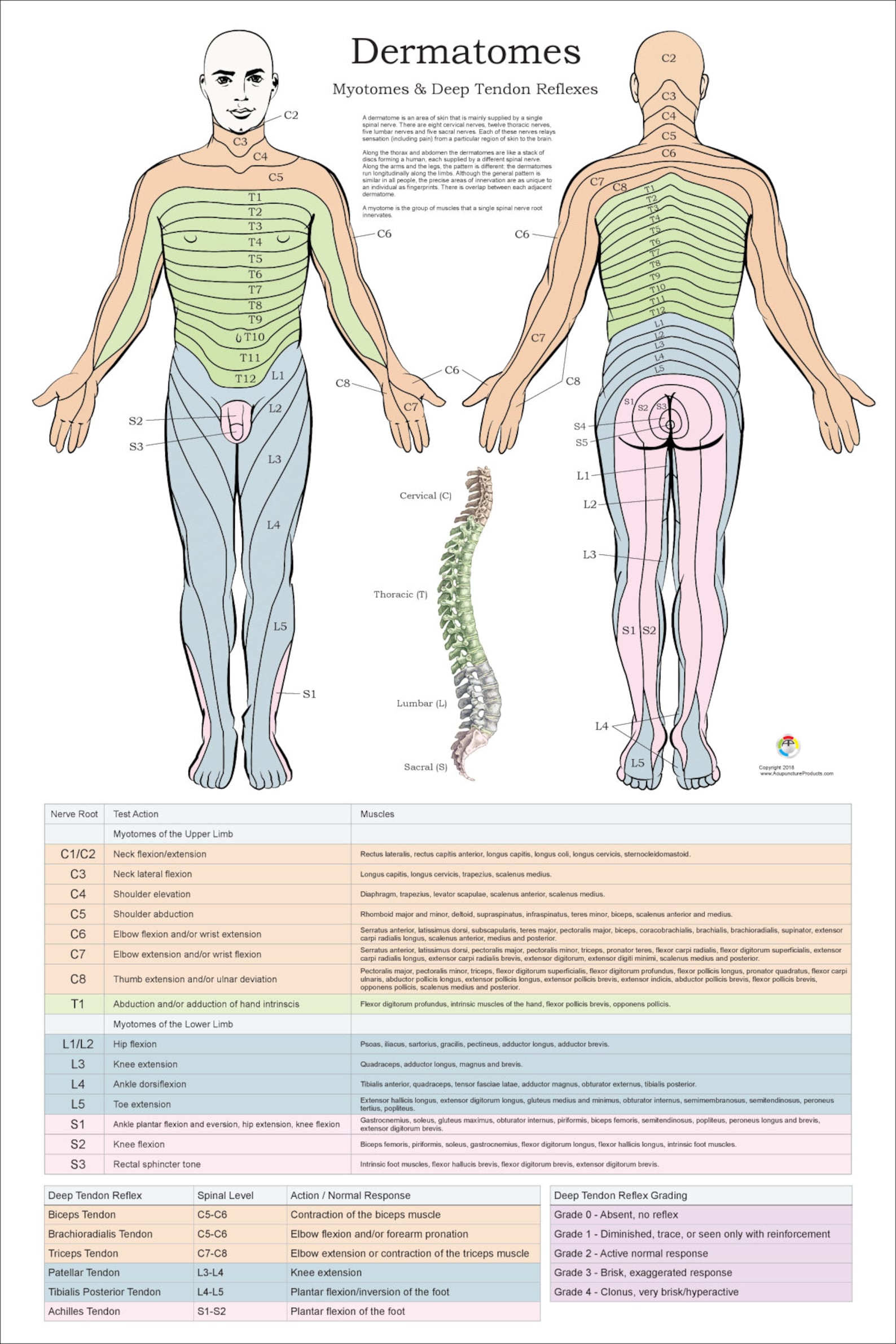 And in general, the pain threshold of a tattoo is different for everyone. If the client feels even a slight malaise, it is better to refuse to continue working. In case of an inadequate reaction of the body, it is better to call the doctors.
And in general, the pain threshold of a tattoo is different for everyone. If the client feels even a slight malaise, it is better to refuse to continue working. In case of an inadequate reaction of the body, it is better to call the doctors.
A lot is determined by the individual characteristics of the organism, therefore the pain map for a tattoo is very, very average.
You may also be interested how painful can it be?
1. Why does it hurt and how much does it hurt?
Discomfort during the procedure depends on your pain threshold and the puncture site a. Some salons offer anesthesia to reduce pain to zero, but we we do not recommend doing it without the need , because the injection of anesthesia is quite painful and is comparable to the puncture itself.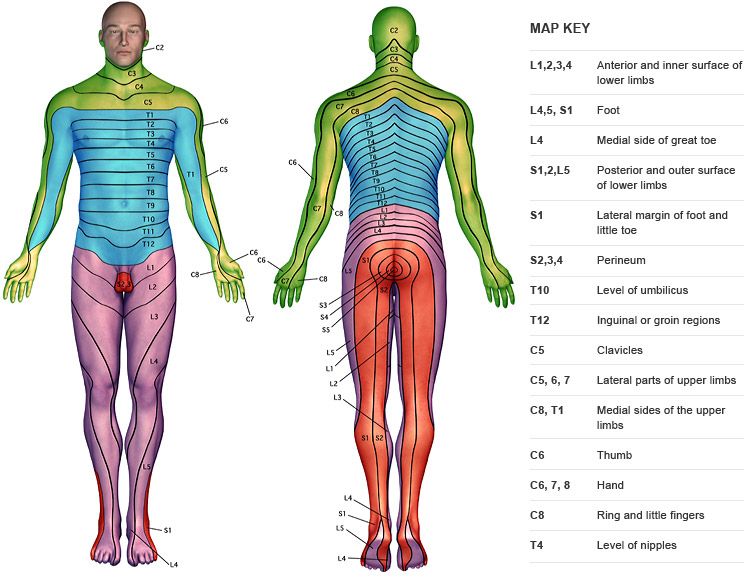
To make the puncture less painful, craftsmen use special hollow needles with laser sharpening. They make the procedure as painless as possible.
Professional piercers never use guns to pierce the tissue, as they pierce tissue under high pressure, resulting in a laceration. Also, pistols cannot be sterilized in statima due to the presence of plastic parts in it.
2. What is the most painful piercing?
Piercing allows you to emphasize your image, but many do not dare to do it, fearing pain, while others ask themselves: “What is the most painful piercing?”. Now there are a very large number of different types of piercings, but some of them are the most painful.
3. Nipples
In the first place in terms of pain, of course, nipples . There are many nerve endings in the nipples, which is why they are so sensitive. Almost all clients note that it is very unpleasant to pierce the nipples, but do not be alarmed, the procedure is very fast, and the experienced sensations are quickly forgotten.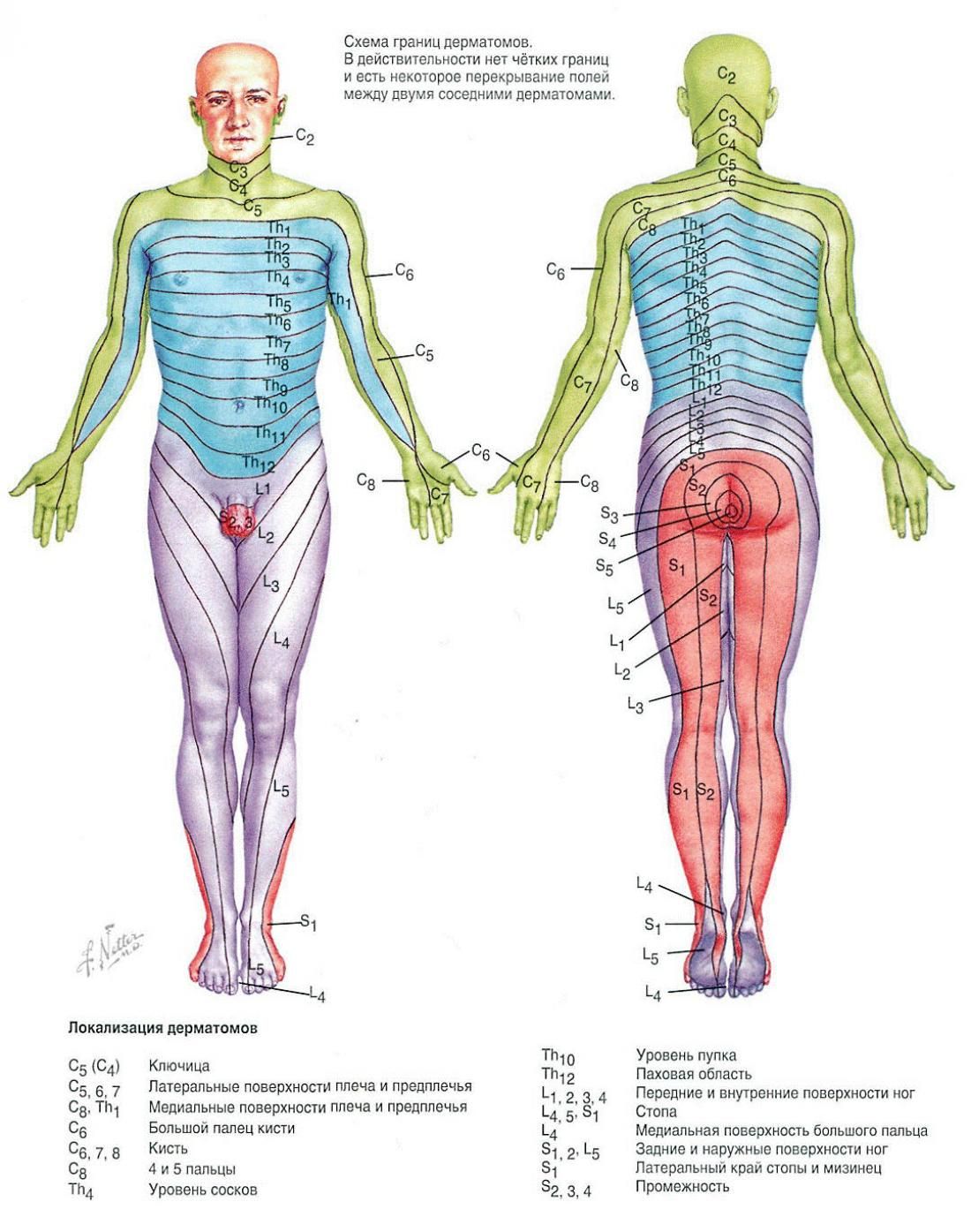
4. Tragus
This is the most painful ear piercing . The thicker the cartilage in this area, the more painful it will be during the procedure. But, again, everything is very subjective, for some people this tragus puncture does not bring much pain.
5. Medusa
Incredibly beautiful jellyfish piercing, but the skin above the upper lip is very delicate, it contains many nerve endings, which is why the piercing procedure most often brings severe discomfort.
6. Wing of the nose
Many people think that piercing the nose does not hurt at all, but this is a delusion. Cartilage is located in the nose of , the piercing of which brings tangible pain , but you won’t have to endure it for a long time, the piercing of the wing of the nose takes a couple of seconds.
7. Where does the piercing not hurt?
Any piercing brings pain, just to a different degree, which depends on the location and your pain threshold. But the most painless punctures are lobe, helix, conch and eyebrow .
But the most painless punctures are lobe, helix, conch and eyebrow .
8. Where is the best place to make the first puncture for a beginner?
Eyebrow and earlobe piercing brings minimal discomfort, and they heal without any problems. It is a little more painful to pierce the helix and conch, but they look more interesting. If you are very afraid and worried, you can always consult with the master and ask him all your questions, perhaps the master will offer you to start with the simplest puncture so that you understand the healing process, and then move on to a more complex puncture.
9. A painkillers with
Piercing Client’s frequent request – make an anesthetic before the piercing to completely avoid pain when punctured, but in good salons you will be refused for several reasons:
External anesthesia does not have the desired effect of and only affects only the effect skin, without working on the cartilage, it will relieve you of pain only at the beginning of the puncture, so there will still be pain.

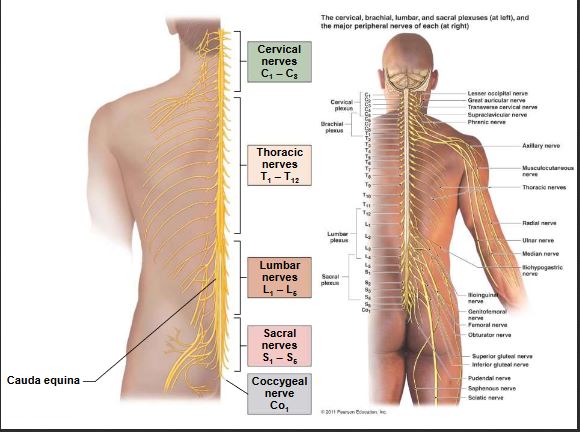
 e. DRGs) causing widespread pain.
e. DRGs) causing widespread pain. Journal of Applied Physiology. August 2007. 103: 511-517.
Journal of Applied Physiology. August 2007. 103: 511-517. Arthitis Rheum. 37(11): 1593-1601.
Arthitis Rheum. 37(11): 1593-1601.